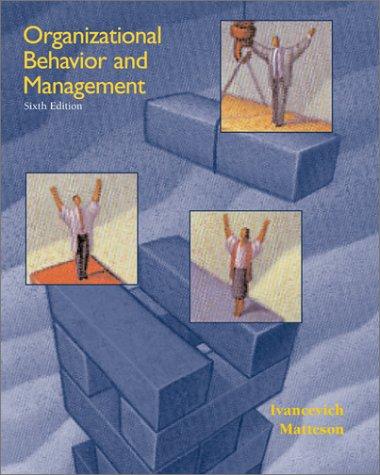Question
3. As the new general manager of the Grand Palladium Jamaica luxury all-inclusive resort, you are assessing your pricing policies. Currently, the price of a
3. As the new general manager of the Grand Palladium Jamaica luxury all-inclusive resort, you are assessing your pricing policies. Currently, the price of a weekend stay is $2,000 per guest. You estimate the marginal cost of serving a guest at $1,600, and while your predecessor unfortunately did not leave you data from the pricing experiments and test marketing she performed, you do know that such experiments were done, and that your predecessor was competent. a. What is your best estimate of the elasticity of demand for a weekend stay at the Grand Palladium? b. You learned that at the current price, the resort is only 80% full on the weekends. Remembering the sense of belonging that you experienced in a crowded subway during the rush hour, you contemplate lowering the price so the resort is completely full. What is your back-of-the-envelope calculation for how much you need to lower the price? c. After some thought you cooled to the idea of full occupancy. Instead, you focused your energy and introduced a gift shop where vacationers can purchase tee shirts and other keepsakes. After some analysis, you learn that the average customer spends $100 in the gift shop, and your margin on gift shop items is about 50%. In light of this, how should you change the price of a weekend stay at the Grand Palladium? Assume that the demand is linear and that the resort capacity is 2,500 guests.
 a. Elasticity of Demand: * The current price for a weekend stay is $2,000 per guest. ' The resort's estimated marginal cost of serving a guest is $1,800. To estimate the elasticity of demand, we need to considerthe current price and the quantity demanded at that price. We know the resort is only 80% full on weekends, which means it's operating at 80% of its capacity. ' At a price of $2,000, 80% ofthe resort's capacity is utilized, so there is a 20% vacancy (100% - 80%}. Given this 20% vacancy, we can estimate the percentage change in quantity demanded by assuming that a 1% change in price corresponds to a 1% change in quantity demanded (this is based on the elasticity concept): . . . ,PMc _ 2011016110 _ 411:} _ The percentage change In pricew P ':'2,ouo 2,001] 0.2(or20%}. ' Since the resort is 20% vacant. it means quantity demanded could increase by 20% to reach full capacity. 20% _ _1 Using theformulaforelasticityofdemand: Elasticity of Demand: 20% So, the best estimate of the elasticity of demand for a weekend stay at the Grand Palladium is -1. b. Lowering the Price for Full Occupancy: ' Currently, the resort is only 80% full on weekends. To calculate how much you need to lower the price to achieve full occupancy, you can considerthe vacancy rate: ' The resort is 20% vacant (100% - 80%). ' To reach full occupancy, you need to reduce the vacancy rate to 0%. This means a 20% reduction in the vacancy rate (20% - 0%). ' Based on the concept of elasticity, a 1% reduction in price corresponds to a 1% increase in quantity demanded. Therefore, you need to reduce the price by the same percentage as the reduction in the vacancy rate to achieve full occupancy. ' So, you need to reduce the price by 20% to fill the resort to capacity. For example, if the current price is $2,000, a 20% reduction would mean lowering the price by $400 (20% of $2.000)
a. Elasticity of Demand: * The current price for a weekend stay is $2,000 per guest. ' The resort's estimated marginal cost of serving a guest is $1,800. To estimate the elasticity of demand, we need to considerthe current price and the quantity demanded at that price. We know the resort is only 80% full on weekends, which means it's operating at 80% of its capacity. ' At a price of $2,000, 80% ofthe resort's capacity is utilized, so there is a 20% vacancy (100% - 80%}. Given this 20% vacancy, we can estimate the percentage change in quantity demanded by assuming that a 1% change in price corresponds to a 1% change in quantity demanded (this is based on the elasticity concept): . . . ,PMc _ 2011016110 _ 411:} _ The percentage change In pricew P ':'2,ouo 2,001] 0.2(or20%}. ' Since the resort is 20% vacant. it means quantity demanded could increase by 20% to reach full capacity. 20% _ _1 Using theformulaforelasticityofdemand: Elasticity of Demand: 20% So, the best estimate of the elasticity of demand for a weekend stay at the Grand Palladium is -1. b. Lowering the Price for Full Occupancy: ' Currently, the resort is only 80% full on weekends. To calculate how much you need to lower the price to achieve full occupancy, you can considerthe vacancy rate: ' The resort is 20% vacant (100% - 80%). ' To reach full occupancy, you need to reduce the vacancy rate to 0%. This means a 20% reduction in the vacancy rate (20% - 0%). ' Based on the concept of elasticity, a 1% reduction in price corresponds to a 1% increase in quantity demanded. Therefore, you need to reduce the price by the same percentage as the reduction in the vacancy rate to achieve full occupancy. ' So, you need to reduce the price by 20% to fill the resort to capacity. For example, if the current price is $2,000, a 20% reduction would mean lowering the price by $400 (20% of $2.000) Step by Step Solution
There are 3 Steps involved in it
Step: 1

Get Instant Access to Expert-Tailored Solutions
See step-by-step solutions with expert insights and AI powered tools for academic success
Step: 2

Step: 3

Ace Your Homework with AI
Get the answers you need in no time with our AI-driven, step-by-step assistance
Get Started


